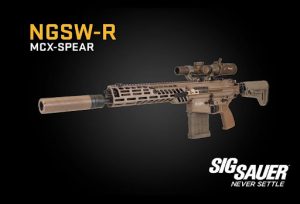Our soldiers rely on the American military’s various armaments to safely protect our nation. Accurate, reliable, and safe components allow our soldiers peace of mind that their equipment will perform consistently over its lifespan regardless of the situation. Silvex maintains ITAR (International Traffic in Arms) certification and a Federal Firearms License, in addition to NADCAP certification. Silvex is proud to offer advanced plating technologies to many of the nation’s top firearms manufacturers in the commercial market and defense contracting sector, partnering with companies like Sig Sauer, Sturm Ruger and Co., and O.F. Mossberg and Sons.
Finishes
Anodizing
Anodizing non-ferrous metal parts result in a controlled layer of oxide coating. Usually performed in a sulfuric acid solution, this coating provides increased corrosion resistance and insulation. Type 2 is the most common anodizing process and can range from 5 to 15 microns, while type 3, also known as hard anodizing, allows for a coating thickness up to 75 microns. Silvex can certify thicknesses of anodized parts to +/- 5 microns. The deep pores created by anodizing make it an ideal application for anything requiring adhesion. This greater surface area allows the metal to be dyed in many colors and is better for retaining adhesives, primers, and lubricants.
Anodizing and Hard Anodizing

Silvex Inc. is proud to partner with Sig Sauer in developing Coyote Brown anodizing for their submission for the U.S. Army’s NGSW program.
Hard anodizing, commonly called hard coat anodizing, varies the process of anodizing with lower electrolyte temperatures in refrigerated tanks and denser currents to produce a thicker layer of oxide coating. Hard anodized parts provide an elevated level of wear and corrosion resistance over regular anodizing due to the thickness of the coating while still maintaining the ability to retain the dye, leading to many exterior gun components utilizing this process. Many military contracts require precise hard anodizing using x-ray machines to certify the coating thickness conforms to what is required by the military specification for government use. You will commonly see frames, receivers, handguards with hard anodized coating, and small accessory components like rails and plates.
Silver Plating
Silver plating can be deposited onto aluminum, brass, bronze, copper, steel, and stainless-steel alloys. The finish can be matte, semi-bright, or bright. Silver can be plated as thin as 1 micron, with most applications requiring thicknesses ranging from 10 to 40 microns depending on the application. Thinner plating is desired for its solderability, while thicker silver application provides high levels of wear resistance. The defense industry relies on silver plating for electrical components for many of the electronic components they utilize daily. Vehicles, navigation systems, and weapons systems must all perform consistently for the part’s lifespan.
Black Oxide
Black oxide coating is the process of chemical conversion coating ferrous metals with a layer of iron oxide. This controlled oxidation process results in a thin iron oxide coating and is usually supplemented with an oil treatment post-conversion. The combination of black oxide and oil treatment greatly increases the corrosion resistance of the parts, as well as provides increased abrasion protection. The oil can vary based on application (hydrophilic or hydrophobic). Black oxide is a more cost-effective plating procedure and is most frequently applied to parts that receive less repetitive use wear, and higher corrosion resistance is prioritized. The defense industry uses black oxide on gun parts, including trigger bars, sights, safety levers, and magazines.
Contact our experts at Silvex, Inc. today to learn more about our advanced plating technologies for the defense industry. Learn more about different types of gun finishes in our quick guide.
